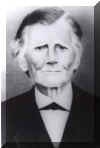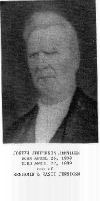Southern-Style
|
|---|
Jernigan
Jernigan genealogy
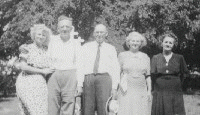 These are the children of Joe Jernigan and Narcis Charlotte Black Jernigan,
pictured below. They include Clare Eunice Jernigan Gillis, Arthur, Cary,
Josephine (Tulu Montel) and Rosa (Kennedy).
These are the children of Joe Jernigan and Narcis Charlotte Black Jernigan,
pictured below. They include Clare Eunice Jernigan Gillis, Arthur, Cary,
Josephine (Tulu Montel) and Rosa (Kennedy).
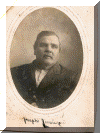

Joe Jernigan and Narcis Charlotte Black Jernigan
Alexander Jernigan (far left) is the brother of Benjamin Jernigan, husband of Vashti Vann. Their son, Joseph Jefferson Jernigan is to Alexander's right.
Josephine Cotton Walling Jernigan (below) is married to a Jernigan, John (pictured beside her) and is descended from Edith Jernigan, daughter of Benjamin Jernigan, who married Lofton Cotton.

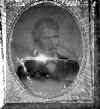
WRITTEN BY DESCENDANT of Benjamin Jernigan
"On this the day of June 1902, it has received to me the undersigned at the age of Seventy Seven years nine months 17 days. While waiting at the house of my youngest son as well as my youngest child, Charles Churchill Jernigan, in very
bad state of health of mind and body which I have been laboring under about four
years commencing about the time of the death of my wife, 3rd of November 1898, to write a kind of
traditional account or history of my ancestors and where they came from to this country. (South Alabama and North Florida) My Grand Father Benjamin Jernigan came from South Carolina through Twiggs County, Georgia, to Conecuh County, Ala. about the date of 1815 while Gen. Jackson's troops
occupied Fort Crawford in Said Conecuh County and brought with him a wife and a large family of girls and boys. He had not lived here long before he went to Pensacola then occupied by the Spaniards and caught yellow fever. But he survived the attack himself, but his wife taken the fever from him and died leaving a good many children.
My mother who was a widow and whose maiden name was Winna Daniel came to the same Conecuh County and near the same place with her Sister who was the wife of Hugh Taylor. Soon after they were all settled near Fort Crawford, Hugh Taylor was killed in an encounter with one Mr. Cooke and my mother's sister was then left a widow and my mother was living with her. Soon after the death of Mr. Taylor my Grand Father and Widow Taylor who was my mother's sister were married. Very soon after this marriage, my Father being a young man and my mother a young woman were married,
thus the Father and Son were brothers by marriage. Brother-in-law and Grand Father had four children born to this marriage 2 girls and 2 boys which were uncles and aunts as well as cousins.
My Grandfather was the owner of 35 or so slaves and was one of the first to build a water saw mill in Santa Rosa County, Florida. He was tolrably successful in business as well as horse racing and accumulated a good handful of property and died about the age of 66. My father commenced the world very poor, but was a hard worker and was a good manager and my mother was the same and made property fast and had Several Slaves and much Stock and real estate. My mother was the mother of Six children and died at the age of 45 years after Seeing all but two grown one died in early life and the youngest not grown. My father died after he was 83 1/s years old. I was married to Miss Martha J. Travis, daughter of Nicholas S. Travis who was as good a woman as has ever been made. When I was one month over twenty one years old and together with the woman above described lived a Stedy laborious life and had many friends of all respectable classes never entertained any fear of Suffering or coming to want. My wife lived to the age of 68 years and died of paralysis after raising eleven children til they were grown and married five girls and six boys and so far as I know they are all respectable. Two of the girls died after starting their families and the balance 6 boys and 3 girls are making respectable livings besides carrying a good deal of intelligence."
"Early History of Escambia County," The Escambia County Historical Quarterly, Vol. VIII, Issue No. 1, March, 1980, p. 12.
"General Jackson had long contemplated taking Florida from the Spaniards and had completely mapped out his campaign. With this idea in view, he sent a group of his neighbors--Benjamin Jernigan, James Thomson, Benjamin Brewton, R.G. Cook, Loftin and Loddy Cotton, to the vicinity of Fort Crawford with herds of cattle in order that he might have a meat supply in his campaign against the Spaniards in Florida. The land records show that Benjamin Brewton--who is an ancestor of the Brewtons of this section--spelled his name B-R-U-T-O-N when he came to this section. Fort Crawford was then occupied by soldiers of the Seventh Georgia Regiment, and while the fort was ostensibly established to protect the settlers of this section, there were in reality no settlers here except those whom Gen. Jackson had sent in with the herds of cattle.
...In order that those who were to navigate the boats should know the streams, those whom Gen. Jackson had sent in with the herds of cattle carried by boat to Pensacola, and comparatively large quantities of these things were raised and transported by boat to Pensacola.
It was never necessary for Gen. Jackson to draw upon the supplies that he had provided in his campaign against Pensacola because the United States acquired Florida from Spain without hostility."
History of Conecuh: p. 50
"Fort Crawford, now in Escambia county, was one of the points earliest settled in Conecuh. It derived its name from an officer in Jackson's command. Benjamin Jernagan seems to have been the first to pitch his tent in this region. He settled within two and a half miles of where Fort Crawford subsequently stood, and on the west side of Burnt Corn Creek, within three-quarters of a mile of the present site of Brewton. This was in the latter part of 1816, or early 1817. Not more than two or three settlements had been made in the county at that time. Soon after Mr. Jernigan came here, he was jointed by James Thomson, Benjamin Brewton, R.J. Cook, Lofton and Loddy Cotten. At this time the fort was occupied by the Seventh Georgia Regiment. General Jackson was in the habit of visiting the home of Benjamin Jernigan--father of the venerable William Jernigan, now a resident of Pollard. Mr. Jernigan had removed with his family from Burnt Corn Springs for the purpose of herding cattle for Jackson's army. From the direction of Pensacola, Jackson sent the Jernigan family supplies by the Conecuh River, and many were the annoyances to which the boatmen were subjected by the Indians firing upon them from the thickets along the banks. The army quartered at this point received their supplies from Montgomery Hill, on the Alabama river. They were hauled in wagons across the Escambias to Fort Crawford, where for a time all the citizens of this section went to procure bred. The erection of the fort was commenced in 1817. Prior to this time only temporary earthworks had been thrown up. No Indian settlements were then near; but now and then prowling bands would pass through the country, ostensibly on hunting excursions. They usually encamped about the heads of streams, and built temporary shelters of pine
and cypress bark. Sometimes they would linger at such points a week together, and then pass onward. In the winter of 1817, tracts of swamp land were cleared of the trees and rank cane, which were burned in the following spring, and the soil planted in corn. Though unprotected by fences, these cleared spots yielded immense crops. The following year an effort was made to fence with the tall cane, but failed.
...When, in 1819, it was determined to erect a courthouse on the east side of Murder Creek, Benjamin Jernigan, R.J.Cook, Allen and Alexander McCaskill, Mabry Thomas, and several others, were chosen by this community to select a site for its erection. As has already been stated, the point fixed upon was Sparta."
Memorandum in re old Fort Crawford, by Ed Leigh McMillan, August 15, 1934.
John Brewton, who was born in the main Fort building of Old Fort Crawford on Aug. 3, 1857, was in my office this morning. He gave me the following information.
His grandfather was Emanuel Brewton. Mr. Brewton's grandmother's name was Caroline Bacon. He is of the opinion that his grandfather and grandmother were born in Georgia. Mr. Brewton's father's name was Emanuel Brewton--spelled Brewton. He was born 60 miles from Atlanta--Mr. Brewton doesn't know in which direction. Mr. Brewton's mother's name was Eliza Travis; she was the daughter of Nick Travis and was a niece of col. William Barrett Travis of Alamo fame.
Mr. Brewton states that after the war between the States, one Zeke Brewton, who had been a prisoner on Ship Island and came from somewhere in Georgia, passed through Brewton and stopped and married Emma Lovelace, dughter of Jim Lovelace. He says that this Zeke Brewton was no relation to the other Brewtons who lived here.
Mr. Brewton says that his grandfather came to the settlement later known as Fort Crawford, the later part of the 18th century. He stated that his grandmother told him that a fort had been
established by the Spaniards sometime previous to their coming.
Mr. Brewton states that he and his sister Mary Brewton Holland, were born in the old fort building at Fort Crawford. He says that there were originally five buildings at the fort, and that the buildings were built of hewn logs and were weather boarded and ceiled with sawn lumber. At the time the fort buildings wee erected, Mr. Brewton states that his people told him that no gun could shoot through the walls.. He says that the buildings at Fort Crawford were built by the United States soldiers, but that there was a fort, or place of refuge at the spot before the Fort Crawford buildings were erected.
The buildings at Fort Crawford were built so high above the ground that the horses of the settlers and soldiers could be put under the buildings and protected from the firing or attacks of the enemy.
The fort was not at the place where the present fort building is located, but lay about a quarter of
a mile to the northeast of the present fort building. Mr. Brewton states that the fort buildings were torn down by his ancestors and other, and the material in the fort used to build barns and stables.
There was a race track at Old Fort Crawford for horse racing. Mr. Brewton has never heard of the soldiers
racing their horses, but said that the settlers often raced their horses.
There was a block from which women could mount their horses, and which block was lso used as an auction block for slaves. Mr. Brewton says that when the people would put their slaves on the auction block for sale, they would dress the slaves in pants with only one leg and shirt with only one sleeve, so
that the physical condition of the slave could be seen; that he was told that if rubbed down with hob lard, an old negro would pass for a young one. He says that it was common practice among the people who sold slaves, to try to deceive the buyer as to the slave's age.
Mr. Brewton tells the following story: he says that Tom Dillon was an itinerant school teacher; that he was employed by Mr. Brewton's grandfather (Nick Travis) to teach his children. He says that one day while Mr. Dillon was in the woods he heard a gun shooting, but couldn't tell the point from which the shots were fired. Finally he saw smoke coming from a mass of moss up in a tree, and that he shot at the moss and an Indian fell out: he killed the Indian and cut a strip of the Indian's hide from his back and made a razor strop.
John Brewton who gave the above information, married Bill Foshee's daughter. At this time he was living in Texas.
Wayne County Kinfolks Deed book 11
p. 134 (second deed on page) Benjamin Jernigan of Edgecomb Co., N.C. bill of sale, Feb. 17, 1819.
p. 289 Benjamin Jernigan deed to William Jernigan for several lots situated in the Town of Waynesborough, Jan. 10, 1822.
